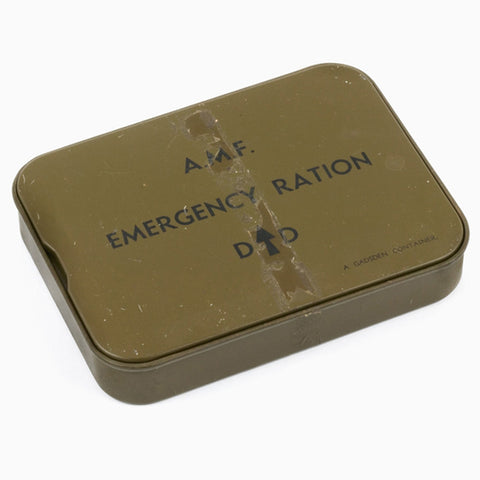The Broad Arrow mark
The broad arrow is one of the oldest symbols of Government or Ordnance. It is the traditional symbol of British military property and, though not as common as it once was, the broad arrow is still used by the Australian Defence Force today.
The bonds that bind our lives with those who have served are ever present, if not always obvious. The broad arrow shines a light on the military and personal histories that connect us.
In the above photo a driver and officer sit in a motor vehicle of the 3rd Australian General Hospital, Egypt, 1915, with broad arrow stencilling. The same pheon appears on boots from the Falklands War, mess tins used along the Kokoda Track and on the casebacks of Bausele’s Air Force 2021 commemorative watches.
The broad arrow pheon is well-known to collectors of military history. Its appearance and use varies throughout Commonwealth countries and this mark of Government acts like a passport stamp.
The kind of broad arrow on an item gives a clue as to where it has been, with whom, when and sometimes even where it ended up. When two broad arrows appear nose-to-nose it creates a Sold-Out-of-Service symbol indicating it has been legally disposed.
The origins of the broad arrow as a mark of Royal ownership lie in the formation of the Royal Artillery during Marlborough’s wars in the 1690s. Lord Romney was appointed Master General of Artillery and adopted his family’s coat of arms, the broad arrow, as one of the badges of the Ordnance Corps.
The pheon appears on many old buildings throughout the Commonwealth because the Ordnance Corps was responsible for the British Government mapping service.

The broad arrow was used as a height reference point or bench mark for surveying and mapping. Here it appears on the side of St John Sepulchre, Norwich, England. This type of broad arrow is one of the earliest bench marks and was used by Ordnance Corps in the mid-1800s.

Here is an Australian Army ration tin from World War II. These rations were issued to every soldier involved in operations and were only to be opened if no other source of food was available.

This broad arrow is etched alongside the manufacturer’s marks on a Verners pattern VII prismatic dry card compass and leather case from 1915.

The broad arrow engraving on these nesting mess tins is almost obscured by the personal story of Sapper Vane Patrick Sheldon 'Pat' Williams, a member of 2/8 Battalion, who became a prisoner of the Germans in 1941.
Williams was captured at Nauplia T Beach, Greece after suffering a bullet wound in his left wrist, shrapnel to his right forearm and head injuries. The 2/8th Field Company had held the line for 11 hours before being forced to surrender when the Germans threatened to shoot 35 British prisoners and shell a nearby village.
Williams had engraved his name into the mess tins at the time of issue and, as a prisoner of war, engraved his history using a pocket knife obtained from an Italian prisoner. He first carved the map of Australia, then his number and name on the base of the larger tin. As he was moved around he added more place names along with those where he had served.
In July 1944 Williams was included in a working party of prisoners on a farm near Stalag 18A. By September he had acquired food cards, civilian clothing, a pistol, maps and a compass in preparation for an escape attempt.
Before his escape Williams carved the names of Bomber White and Buck Buchanan into the tins. One newspaper account said they had been wounded and sent home by hospital ship, another that they had earlier escaped captivity. In any case, these two friends were ‘lucky blokes’.
After killing two guards, Williams and another prisoner slipped away from their working party and took a train to Munich. Travelling out of Germany, they met a Yugoslav man who escorted them to the partisan headquarters near Fala. The two Australians briefly served with the partisans before being evacuated by air to Italy then home to Australia in 1944.
When he escaped, Williams had left his mess tins behind with another prisoner, Driver Leslie William Henderson. The tins were used and carried by Henderson for the rest of his captivity until he had to abandon them. In 1945 the tins were found in a ditch near the town of Murau, Austria by a young Ukranian man named Bohdan Mrozowskij.
Mrozowskij was a refugee who had earlier been imprisoned in a Nazi labour camp and was evading the advancing Russians. He used the tins for five years while in a displaced persons camp and took them to America when he emigrated in 1950.
After reaching New York, Mrozowskij contacted the Sydney Daily Telegraph to locate the owner and a reporter managed to find Williams. The engraved tins were sent to Australia and presented to Williams in July 1950.
Do you have a story about a broad arrow mark? Get in touch at airforce2021@bausele.com
Click here to view the Official Air Force 2021 timepiece collection






